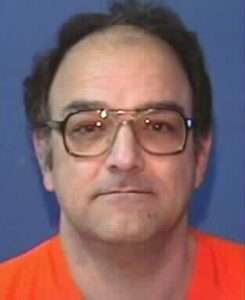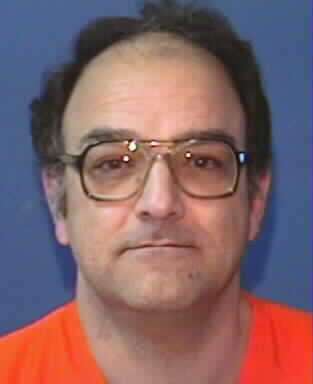Gerald Stano was a serial killer who was executed by the State of Florida for a series of murders
According to court documents Gerald Stano would be convicted of 22 murders, would confess to 41 and authorities believe he may have been responsible for over 80
Gerald Stano would ultimately be arrested, convicted and sentenced to death
Gerald Stano would be executed by way of the electric chair on March 23 1998
Gerald Stano Photos

Gerald Stano Case
Gerald Stano, prosecuted for 33 murders, was linked to the killings of 88 women. The Ormond Beach man was executed more than 20 years ago.
The man who investigated him said the actual number of homicides the serial killer committed are nearly triple that.
For killing a 17-year-old Port Orange girl, Stano was sentenced to death. The 46-year-old was strapped to the electric chair in March 1998. The current overtook him as family members of at least two of his victims watched. One witness said Stano barely jerked. It was over in about a minute.
Eighteen years earlier, Stano led police to the area where his last murder victim was discovered. As he stood on the same soil where he had dumped and covered her body and as he came to the realization he was never spending another day outside of state-ordered confinement, Stano wept. Then-detective Paul Crow, who spent the next six years pulling more confessions out of Stano, would never see the killer show that kind of emotion again
Stano was struck with the realization that life as he knew it — which for him entailed brutally stealing the lives of vulnerable women — was over.
“He told me, ‘This is the day you got me,’ ” Crow said.
The last one who got away was the one who ended the carnage that stretched across three states. Stano attacked Donna Marie Hensley with a blade, a bottle opener, a pair of scissors and a container of muriatic acid
She bolted out of that Daytona Beach motel room in March 1980 and Stano — deciding he wasn’t going to risk being seen in public apprehending a screaming, bleeding woman — got into his car and drove away.
Hensley went to the hotel clerk’s office, who called an ambulance. Daytona Beach police showed up, too, and Hensley was interviewed by then-detective Crow. She described Stano in great detail. She’d seen him many times before and so did some of the other prostitutes in the area, who had similar horror stories about him
“When we interviewed her, she knew who did it,” Crow said, recalling the conversation he and other detectives had with Hensley. “She had been with him before. She described the car and told us where he worked at, etc.”
Stano was arrested on charges related to his attack on Hensley.
Two months earlier, in January, Mary Carol Maher, 20, was abducted near the Daytona Beach Boardwalk and killed. Maher, a graduate of Mainland High School, was a student at a local community college and was about to enroll at Clemson University on a swimming scholarship. Crow and other investigators suspected the same man who killed Maher was the same man who had tried to kill Hensley.
Crow sat across from Stano and laid some photographs on the table.
“I took Mary Carol Maher’s photograph [and] I put it with her sister … and four other photographs,” Crow said. “I showed it to him and asked if he had ever seen any of these people before.”
Gerald Stano went down the line and confirmed that he knew Maher.
“He put his finger on [the photo] and said, ‘I knew her, Mary Carol,’ ” Crow said. “He used her name in the past tense.
The first known news story about Gerald Stano the serial killer was published in The News-Journal on Sept. 3, 1981, nine days before the killer’s 30th birthday. Stano, during a hearing in a DeLand courtroom, admitted to killing six women. The victims were Maher, 20; Toni Van Haddocks, 26; Nancy Heard, 34; Ramona Neal, 18; Linda Hamilton, 16; and a woman whose identity was never determined.
The judge at the time, S. James Foxman, imposed three consecutive life terms for Stano, which he did reluctantly. Foxman told the defendant, “In essence, you have profited because of the large number of murders committed.” Foxman referred to the bargain Stano was given in exchange for his confessions.
Gerald Stano would return to Foxman’s courtroom a couple years later and Foxman would hand down the penalty he thought was the most just.
AN ADOPTED SON
Paul Zeinenger was born Sept. 12, 1951, in Schenectady, N.Y. His mother, who was suspected of being a prostitute, severely neglected him, which stunted his development, warped his mind and resulted in a disturbing pattern of behavior that continued throughout his adult life
The state removed the boy from his mother. He was deemed unadoptable, but the nurse who cared for him insisted on adopting him. She didn’t fully realize the boy’s psychological damage and felt she could help him. The adoption was granted. The boy’s adopted parents changed Zeininger’s name to Gerald Eugene Stano.
Despite the efforts made by his adopted parents, particularly his mother, Stano was never a normal child. He regularly acted out in school.
He was sent to Florida to live with his grandparents. He was sent to military school. He moved to Pennsylvania and then back down to Florida after his parents moved there. With every stop, Stano’s parents hoped the new start would be good for him. Stano’s behavior never improved.
He was a bully in school. He was a compulsive thief. He once threw a rock off an overpass and hit a car, which could have killed the driver. He was in and out of jail. He once impregnated a mentally disabled girl. Stano’s parents paid for her abortion
Gerald Stano struggled to hold jobs.
At age 23, he met a woman and the pair got engaged. During the months leading up to the wedding, Stano was arrested for check fraud, so his fiancee’s family wrote to the judge asking him to be released from jail early so he could get married. The judge agreed.
The marriage lasted 13 months. Gerald Stano, unbeknownst to his wife and everyone else, had already begun killing girls and women. He would sometimes come home with blood on his clothes and inside his car.
88 VICTIMS
Crow met with Gerald Stano numerous times over a six-year period. Stano knew he faced life in prison, so he was reluctant to discuss other murders he committed because he didn’t want to be moved to Death Row.
“He was cagey about that,” Crow said.
Gerald Stano felt comfortable with Crow. Before long, Stano saw Crow more as a friend than an investigator
Crow did a lot of legwork between interviews. He looked for cases involving missing girls and tried to find out as much as he could about those cases, including the manner in which they died. He then would check to see whether Stano was in the vicinity of where those victims wound up missing. If there was a possible lead there, he would keep digging. Crow wouldn’t ask a question he didn’t know the answer to. He let Stano fill the blanks.
Another person who earned Stano’s trust was Kathy Kelly, who worked for The News-Journal for 50 years as a reporter and editor. She co-wrote a book, “I Would Find a Girl Walking,” which included information she culled from interviews with Stano, Crow and others related to the case. The book also contains letters Stano wrote Kelly while on Death Row.
“I think he fancied himself as quite the stud,” she said, describing how Stano disarmed women with his confidence and charm. “He wore these open-necked shirts and just kind of came on to women in kind of a gentle way
“If they complained about the kind of music he had on the radio or disagreed with him about anything … this red rage would come over him and he would just lash out at them,” Kelly said.
One day in September 1973, Gerald Stano encountered Barbara Bauer, 17, at the Holly Hill Plaza on Nova Road. Bauer, of New Smyrna Beach, was stranded due to a broken-down car. She had been in town shopping at a fabrics store.
Wearing an Ohio State T-shirt and denim shorts, Stano pulled up to where the high school cheerleader was parked and offered to help her. He owned the same model car. He was portly and wore glasses, but he was friendly and seemingly generous. He jump-started her car. He then offered to drive her car a short distance to fully charge the battery and then bring her back. He even promised to reimburse her for the gas.
Bauer never returned home that day. Her remains wouldn’t be found for seven months. In April 1974, a couple in Starke, a town northwest of Gainesville, discovered a human skull in the woods near their home. Deputies found other remains in the area and they were confirmed to be those of Bauer
In December 1975, Stano killed Susan Bickrest, an aspiring cosmetologist who moved to Daytona Beach earlier that year from Ohio. She worked at a bar Stano visited. He was known to visit a lot of them around Daytona.
Gerald Stano followed Bickrest after she got off work. He tracked her to her apartment on Derbyshire Road. He confronted her, forced her into his car, beat her and choked her. Her body was later found floating in Spruce Creek under a bridge in Port Orange by two fishermen. Her cause of death was drowning.
For murdering Bickrest, Stano received the death penalty.
Gerald Stano’s other victims ranged in ages 12 to 34. He was prosecuted for a total of 33 murders. Twelve grand juries were impaneled for killings committed by Stano. He received a total of eight life sentences and three death sentences.
His killed his victims in Florida, Pennsylvania and New Jersey. They were shot, stabbed, strangled or drowned. All of his victims were women. Most were white. Two were black
Gerald Stano had a way of selecting helpless victims who he knew he could overpower.
“When I asked him how he selected his victims, he was very candid,” Kelly said. “He said, ‘I would find a girl walking.’ To him, that meant someone very vulnerable








